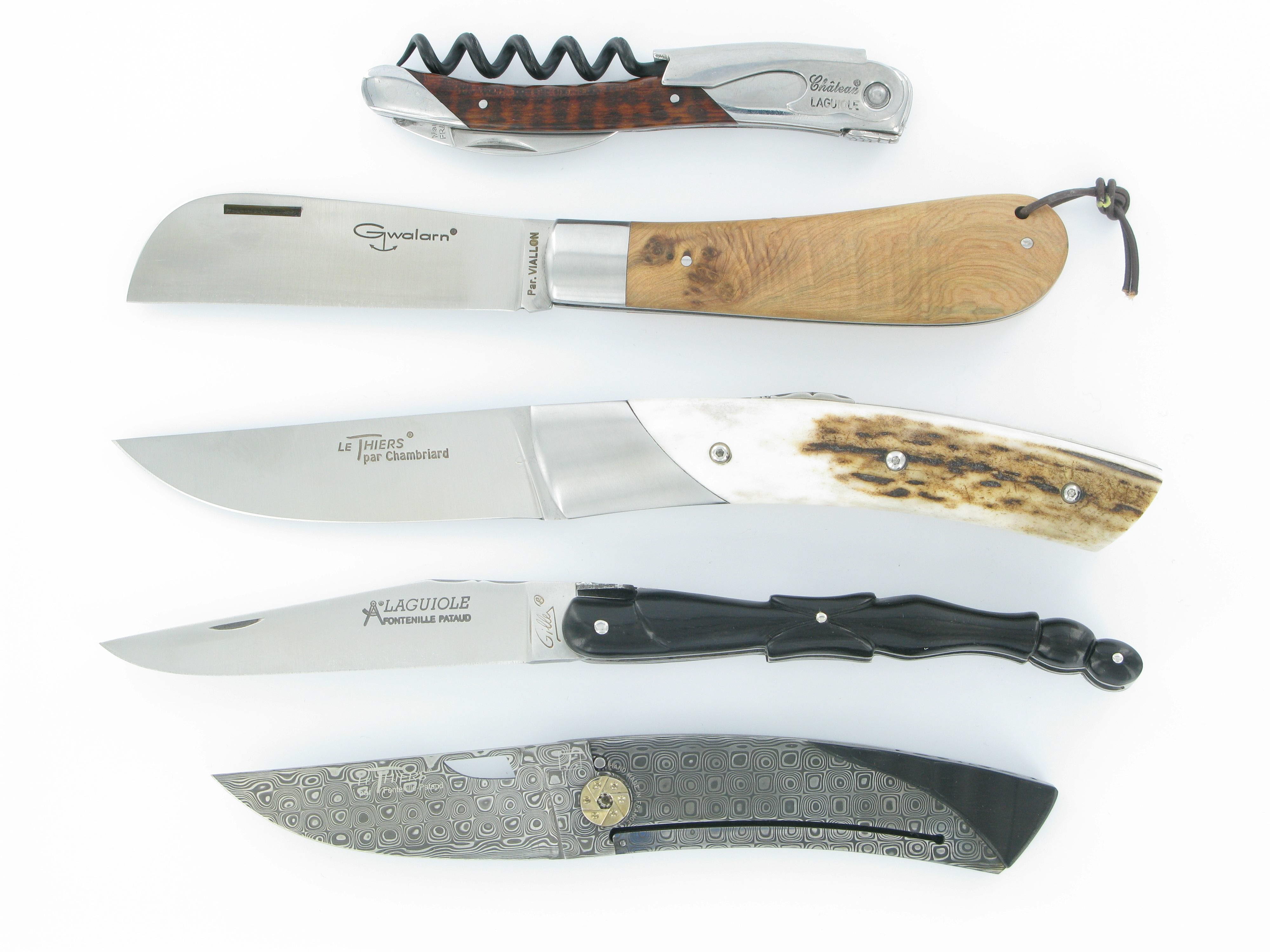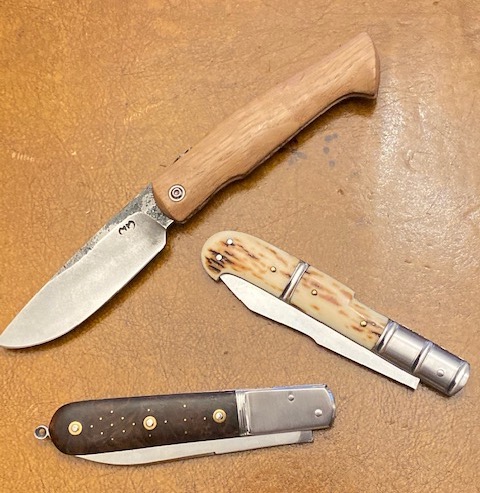You have no items in your shopping cart.
Best folding knife ? Which knife to choose ?
The universe of the folding knife is extraordinarily vast. There are pocket knives that remind us of memories: the grandfather's knife, the knife used during scout camps, the pocket knives that we use during a meal with friends, at the restaurant or at home. The knives which are our partners during our trips on a motorcycle, in the forest or on a trek at the end of the world.
Pocket knives are bought for their user, collectors, those who want to offer them on certain occasions: birthday, party, Christmas, Valentine's Day ...

What are the different parts of pocket knives?
In a folding pocket knife, there are several pieces:
the blade
the handle
the system
1- The blade
The blade is the essential part of the knife. It has to be of very good quality to be able to be effective.
1.1- steels
There are several types of steel:
- stainless steel - 12C27 - 14C28
- carbon steel
- Damascus stainless Steel
- Damascus Carbon Steel
1.2- cutting or forging the blade
Originally, all the blades of pocket knives were forged with carbon steel, then stainless steel.
Some manufacturers continue to forge their blades like the Douk Douk of Cognet.
It is only some cutlery craftsmen who forge their blades with a hammer or pestle hammer.
Most manufacturers cut with cutting tools and large presses. This technique is always used for large series.
For small and medium series, laser cutting is used
1.3- quenching
After cutting, the blades are put in an oven to heat them to a certain temperature depending on the type of steel used. For carbon steels, the blades are immersed in an oil bath (oil quenching). For stainless steels, the blades are air cooled (air quenched).
We can also make more technical temples: cryogenic quenching which allows to have an even harder steel.
1.4- grinding
This is to give a cutting angle to the blade in order to thin the part of the blade towards the cutting edge.
Following the milling, the blades are polished and sharpened.
2- The handle
2.1- the different parts of the handle
The different parts of the handle are: the plates on which the handle rests, the opening and closing system, the spacer.
The handle can be embellished with a front miter, rear miter and / or central miter.
The handle of Le Thiers knives is very specific.
2.2- the materials used for the manufacture of the handle
It is possible to make a folding knife handle with different materials:
- wood
- animal ivory
- bone
- plastic
- rubber
- stone
- steel
- without any material like skeleton knives
The handle is very important for Le Thiers knife.
3- The Opening system
3.1- spring system
It is a very old system. The spring is a metal part which is positioned between the plates of the knife handle. It keeps the blade open and closed.
Care must be taken when closing the blade.
The best known spring knife is the Laguiole knife
3.2- liner system
The blade is kept closed by a metal tab part in the handle.
To open the knife, you have to press on this tab to release the blade
3.3- Piedmontese system
It is a very simple system. The blade has a projection which comes to rest on the back of the handle so that the blade remains open in the continuity of the handle.
3.4- pump system
You have to press a pump located in the middle or at the back of the handle. The blade is then released and can be opened very easily.
3.5- fixed blade
Fixed blade knives are not collapsible. They are rather hunting, trekking, military knives.
BUT what is the best folding knife?
It is very difficult to answer this question. A knife is very personal.
There are knives for all uses:
- aknife for everyday
- a knife to go on a trip
- a knife for scouts
- a knife to go to the forest and collect mushrooms
- a knife to work
- ahunting knife
- a knife for pruning trees
- a collection knife


